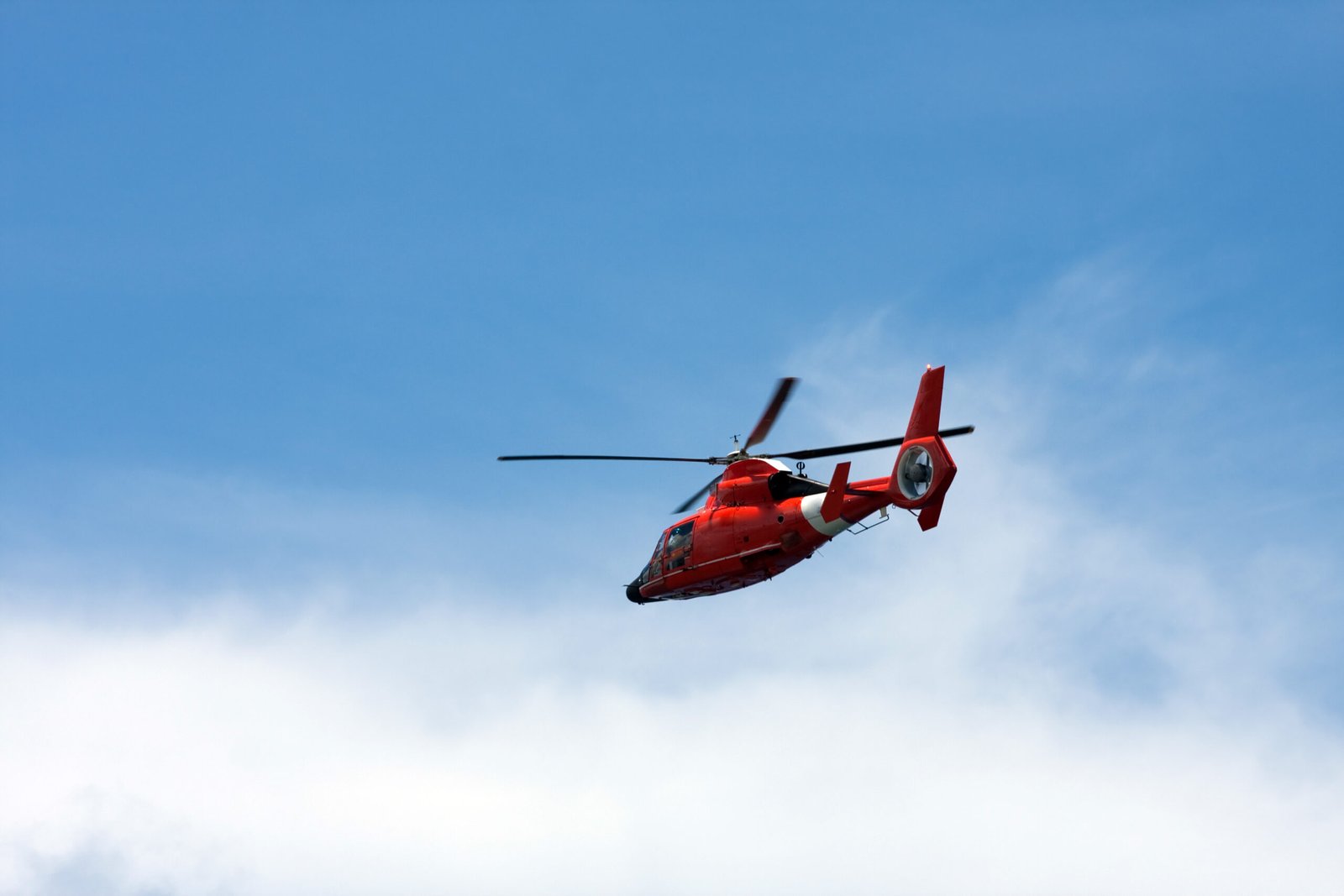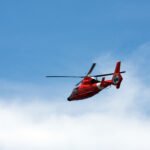sustainable aviation
Soaring High: The Future of Sustainable Aviation Technologies
As the aviation industry faces mounting pressures to reduce its environmental footprint, innovative technologies are emerging that promise to revolutionize the way we fly. From electric aircraft to sustainable fuels and advanced air traffic management systems, the future of aviation is not just about reaching new heights but doing so responsibly. However, as we look toward this greener horizon, it’s essential to equip ourselves with knowledge and skills through specialized education.
*Aviation Schools: Types of Courses**
Education plays a critical role in cultivating the next generation of aviation professionals who will steer these advancements. Aviation schools offer a diverse range of courses tailored to various interests within the field. Here’s a glimpse into some popular types:

1. **Pilot Training Programs**: These programs focus on preparing aspiring pilots for both private and commercial flying careers. Students learn essential flight maneuvers, navigation techniques, and aviation regulations.
2. **Aircraft Maintenance Technology**: This course trains students in maintaining and repairing aircraft systems. Knowledge in this area is vital for ensuring safety and efficiency in operations.
3. **Aviation Management**: For those interested in the business side of aviation, this course covers airport management, airline operations, and logistics—essential for running a sustainable operation.
4. **Air Traffic Control Programs**: These intensive courses prepare individuals for managing air traffic effectively while considering fuel efficiency and minimizing delays.
5. **Sustainable Aviation Technologies**: A newer field of study focusing on eco-friendly practices such as biofuels, electric propulsion methods, and carbon offsetting strategies.
With these varied educational paths available, prospective students can find their niche while contributing to an evolving industry focused on sustainability.
*Aviation Blogs, Websites & Social Media Sites**
Staying informed about advancements in sustainable aviation is vital for enthusiasts and professionals alike. Here are some notable blogs and websites:
**Air Transport World**: An excellent source for industry news covering everything from airlines’ financials to technological innovations.
**Flying Magazine Blog**: Offers insights into pilot training tips alongside features about sustainable flying practices.
**The Air Current**: Delves deep into airline strategies and market trends with a focus on innovation.
**General Aviation News**: Provides updates on general aviation events combined with discussions about green initiatives.
Social media platforms are also bustling hubs of information:
On Twitter, follow accounts like @AeroNews or @FLIGHTGLOBAL for real-time updates.
LinkedIn groups related to aviation technology often share articles discussing ongoing research and development efforts toward sustainability.
Instagram pages like @sustainableaviation highlight eco-friendly achievements within the industry through stunning visuals.
These resources can keep you engaged with current trends while fostering connections with like-minded individuals passionate about green flying solutions.
*FAA Flight Schools/Simulator Training**
The FAA plays an integral role in regulating flight training standards across the United States—ensuring safety while fostering innovation through various flight schools equipped with state-of-the-art simulators that mimic real-world flying conditions without leaving the ground.
Flight schools endorsed by the FAA not only teach fundamental piloting skills but increasingly include modules dedicated to understanding sustainable practices such as energy-efficient flying techniques or alternative fuel utilization during training scenarios.
Simulators provide invaluable experience; they allow pilots-in-training to explore complex situations safely while honing their skills before taking off into actual skies filled with challenges—and opportunities—to implement green technologies effectively.
In conclusion, as we navigate toward a more sustainable future in aviation technology—grounded firmly by education—we find hope soaring high above us! Whether you’re embarking on your journey through one of many specialized courses or engaging with communities online dedicated to innovation in our skies—the path forward is bright indeed!
Soaring Skies: The Future of Sustainable Aviation Technology
Aviation, an industry synonymous with innovation and adventure, is on the brink of a remarkable transformation. As we hurtle toward a more sustainable future, the integration of cutting-edge technology will redefine how we think about flying. But before we dive into this thrilling era, let’s explore how aspiring aviators can prepare for these changes through various educational paths and resources.
*Aviation Schools by Types of Courses**
Diverse educational programs offer a multitude of courses that cater to every facet of aviation. At the forefront are flight training schools, which primarily focus on preparing students for piloting careers. These institutions provide hands-on flight experience complemented by ground school instruction covering navigation, meteorology, and regulations.

Then there are aviation management programs that equip future leaders with knowledge in finance, operations, and logistics within the aviation sector. For those interested in aircraft maintenance, airframe and powerplant (A&P) schools deliver specialized training to ensure safety and efficiency in aircraft operations.
Furthermore, universities often offer degree programs in aerospace engineering, focusing on designing and developing aircraft technologies. This sector is crucial for fostering innovations that enhance sustainability—such as electric propulsion systems or advanced aerodynamics.
*Lists of Aviation Blogs, Websites, Social Media Sites**
Staying informed is vital in an ever-evolving field like aviation. Fortunately, numerous blogs and websites provide insights into current trends and advancements. Noteworthy blogs include “Airliners.net,” where enthusiasts share photographs alongside discussions about airline operations worldwide. Similarly, “The Points Guy” offers travel tips while emphasizing sustainability initiatives within airlines.
For those who prefer concise updates through social media channels, Twitter has become a hub for aviation news; accounts like @FlightGlobal share real-time information on industry developments. Additionally, Instagram accounts such as @aviationdaily showcase stunning imagery from around the globe while highlighting eco-friendly practices adopted by various airlines.
YouTube also hosts a plethora of channels dedicated to aviation topics—like “Mentour Pilot,” wherein professional pilots discuss experiences while also addressing the importance of environmental stewardship in their profession.
*FAA Flight Schools/Airplane Schools/Simulators**
When it comes to official flight training in the United States, FAA-approved flight schools are pivotal. They adhere to strict regulations ensuring quality education for aspiring pilots. Some renowned institutions include Embry-Riddle Aeronautical University and ATP Flight School—both known for their comprehensive programs that combine practical flying experience with theoretical knowledge.
Additionally, simulation technology is revolutionizing pilot training methodologies. High-fidelity simulators allow students to practice complex maneuvers without leaving the ground—a critical aspect when considering emergency scenarios or learning new aircraft systems. Many modern flight schools incorporate simulation time as part of their curriculum to enhance overall proficiency while minimizing costs associated with actual flight hours.
In conclusion, as we look skyward towards sustainable aviation’s bright future filled with electric planes and eco-efficient technologies, it’s imperative that tomorrow’s pilots receive robust training through diverse educational avenues available today. With countless resources at their fingertips—from insightful blogs sharing industry wisdom to FAA-certified schools providing top-notch instruction—aspiring aviators are well-positioned to not just witness but actively participate in this exciting new chapter of aviation history! The sky may not be the limit after all; instead, it could be just the beginning!
The Green Skies Ahead: Sustainable Innovations in Aviation
As the aviation industry continues to evolve, sustainability has emerged as a critical focus. With increasing awareness of environmental impacts, innovative solutions are being developed to reduce carbon footprints and promote greener practices. To navigate this transformative landscape, aspiring aviators can access various educational resources tailored to their interests and career goals.
*Aviation Schools by Types of Courses**
The journey into aviation begins with education, and there is an abundance of options available for those eager to take flight. Aviation schools offer diverse programs catering to different aspects of the field:

1. **Pilot Training Programs**: These courses focus on the technical skills needed to operate aircraft. From private pilot licenses (PPL) to commercial pilot licenses (CPL), students gain hands-on experience that prepares them for real-world flying.
2. **Air Traffic Control**: Specialized curricula teach students how to manage air traffic safely and efficiently. Graduates play a crucial role in maintaining orderly skies while ensuring flights operate smoothly.
3. **Aviation Management**: For those interested in the business side of flying, aviation management courses cover topics such as airport operations, airline marketing, and logistics—essentially everything needed for running successful aviation enterprises.
4. **Aircraft Maintenance Engineering**: This program equips students with the knowledge required to troubleshoot and repair aircraft systems. As sustainable technologies emerge, understanding new eco-friendly materials becomes increasingly vital.
5. **Unmanned Aerial Systems (UAS)**: With the rise of drones, many institutions now offer courses focused on UAV technology, regulations, and applications—a rapidly growing sector within aviation.
Exploring these varied pathways provides prospective aviators with rich opportunities aligned with their passions while contributing positively to industry sustainability.
*Lists of Aviation Blogs, Websites, Social Media Sites**
Staying informed about the latest advancements in sustainable aviation practices is essential for both professionals and enthusiasts alike. Here’s a compilation of valuable online resources:
**Aviation Week Network**: A leading source for news covering all aspects of aerospace innovation.
**FlightGlobal**: An extensive database offering insights into airlines’ efforts toward sustainability.
**The Air Current**: Focuses on news analysis related specifically to market shifts in airlines aiming for greener operations.
**Simple Flying Blog & Site**: Offers updates on current events along with expert opinions on how airlines can innovate sustainably.
**Reddit’s r/flying Community**: A vibrant forum where pilots share experiences and discuss eco-friendly practices in aviation.
Additionally, popular social media platforms like Twitter (#AvGeek) or Instagram provide a visual feast featuring stunning aircraft photos alongside discussions about sustainability trends within the community.
*FAA Flight Schools/Airplane Schools/Simulators**
For those ready to take action towards becoming licensed pilots or specialists in other areas of aviation, FAA-approved flight schools remain indispensable resources. These institutions uphold rigorous training standards that ensure safety while equipping students with crucial skills.

Many FAA flight schools offer advanced simulators that mimic real-life flying scenarios—perfecting techniques without leaving the ground! Simulators not only minimize fuel consumption but also allow trainees from diverse backgrounds unlimited opportunities for practice without environmental impact concerns.
In conclusion, as we gaze upon the horizon marked by promising green skies ahead, it’s clear that sustainable innovations are reshaping our beloved industry. By diving into educational avenues and utilizing available resources—be it blogs or reputable flight schools—we can actively participate in creating a more environmentally responsible future for aviation! So buckle up; it’s going to be an exciting ride!
Wings of Change: How Aviation is Adapting to Environmental Challenges
As the world grapples with climate change, the aviation industry finds itself at a pivotal crossroads. The soaring demand for air travel, combined with concerns about environmental sustainability, has pushed the sector to embrace innovation like never before. From cutting-edge technology training programs to the rise of drones and online courses, aviation is evolving rapidly in response to these challenges.
One of the most significant technological advancements in aviation training is the use of simulators. Gone are the days when aspiring pilots relied solely on traditional flight instruction. Today’s state-of-the-art simulators provide an immersive experience that closely replicates real-world flying conditions. These high-fidelity environments allow students to practice maneuvers, develop problem-solving skills, and understand complex systems without leaving the ground. Moreover, they significantly reduce fuel consumption and emissions associated with training flights, thus promoting greener practices right from the start.
For those eager to delve deeper into aviation discussions and stay updated on industry trends, a plethora of blogs and websites exist. Some noteworthy mentions include “The Points Guy,” where you can find insights into airline loyalty programs; “AirlineReporter,” which covers airline news and reviews; and “Flying Magazine,” offering expert advice on various aspects of flying. Social media has also become an invaluable resource; platforms like Twitter host vibrant conversations under hashtags such as #AvGeek or #AviationNews, making it easy for enthusiasts to connect.
In addition to blogs and social media channels, numerous online courses offer aspiring aviators critical knowledge. Ground schools have transitioned online, providing flexibility for those who may not be able to attend in-person classes. Institutions like Embry-Riddle Aeronautical University and Purdue University Global offer comprehensive curricula covering everything from basic aerodynamics to advanced navigation techniques. Online platforms such as Coursera or Udemy also feature specialized courses tailored for specific interests within aviation—ideal for anyone looking to enhance their skills while balancing other commitments.

The increasing popularity of drones marks another transformative change within the aviation landscape. As technology advances, drones are being utilized across various industries—from agriculture monitoring to disaster relief efforts—showcasing their versatility beyond traditional flight operations. The Federal Aviation Administration (FAA) has been proactive in establishing regulations that facilitate safe drone operations while promoting innovation in this burgeoning field. For prospective drone operators or enthusiasts wanting more information about regulations or certification processes, visiting FAA’s dedicated drone page provides essential resources.
Pilot jobs continue evolving alongside these changes too! The industry’s push towards sustainability has led airlines to seek candidates skilled not only in flying but also knowledgeable about eco-friendly practices. Companies are increasingly looking for pilots who understand green technologies or have experience operating electric aircraft—a trend that will likely gain momentum in coming years.
To navigate this ever-evolving landscape effectively, staying informed through reliable sources remains crucial. The FAA’s official website serves as a treasure trove of information regarding licensing requirements, regulations updates, and safety guidelines—ensuring aviators remain compliant while pursuing their passion.
In conclusion, aviation stands at a remarkable juncture where tradition meets innovation driven by environmental necessity. With enhanced training methods using simulators, accessible online education platforms, exciting opportunities with drones—and a commitment toward sustainable practices—the future looks bright for those ready to embrace these wings of change!
Green Skies Ahead: How Sustainable Practices Are Changing Air Travel
As the world grapples with climate change, the aviation industry is rising to the challenge by embracing sustainable practices that are reshaping air travel. With advancements in technology and training, the skies are set to become greener than ever.
One of the most significant developments in aviation is the integration of advanced technology into pilot training. Flight simulators have revolutionized how aspiring pilots learn. These sophisticated systems provide realistic environments that mimic various flying conditions without the environmental impact of traditional flight training. Pilots can practice emergency procedures or complex maneuvers in a controlled setting, ensuring they are well-prepared for real-world scenarios while minimizing their carbon footprint.
For those keen on keeping up with industry trends, there’s a wealth of information available online. Numerous aviation blogs and websites offer insights into sustainability efforts within the sector. Sites like AvWeb and Flying Magazine provide regular updates on innovations, regulatory changes, and environmental initiatives. Social media platforms such as LinkedIn and Twitter feature groups dedicated to sustainable aviation discussions, allowing enthusiasts to connect and share ideas about reducing emissions and enhancing efficiency.

Moreover, an array of online courses is now accessible for individuals interested in pursuing careers in aviation or expanding their knowledge base. Ground schools offer foundational education for both aspiring pilots and those working behind the scenes at airports or airlines. Platforms like Coursera and Udemy host comprehensive courses covering everything from aerodynamics to air traffic control fundamentals. Such educational resources play a crucial role in preparing future professionals who will be at the forefront of sustainability efforts.
The demand for skilled pilots continues to rise as air travel rebounds post-pandemic; however, prospective aviators must also be equipped with knowledge about green technologies. Airlines are increasingly looking for candidates who understand eco-friendly practices—be it operating fuel-efficient aircraft or employing strategies that reduce waste during flights.
In addition to traditional piloting roles, new opportunities are emerging within the realm of drones—a sector poised to transform logistics and delivery services while minimizing environmental impact. Drones can efficiently transport goods over short distances without contributing significantly to carbon emissions associated with conventional transportation methods. As regulations evolve, so too do job prospects in this exciting field.
For anyone involved in aviation or simply interested in its trajectory toward sustainability, staying updated on FAA regulations is imperative. The Federal Aviation Administration (FAA) has been actively promoting initiatives aimed at reducing greenhouse gas emissions through innovative technologies like sustainable aviation fuels (SAF). Their website provides valuable resources detailing guidelines for implementing these practices across various sectors of aviation.
In conclusion, as we navigate toward greener skies, it’s clear that innovation plays a pivotal role in shaping the future of air travel. From enhanced pilot training through simulators to embracing cutting-edge drone technology and staying informed via diverse online platforms—every aspect contributes towards making our skies cleaner and more sustainable than ever before. Embracing these changes not only benefits our planet but also opens up exciting avenues for professionals passionate about shaping an eco-conscious future in aviation!




